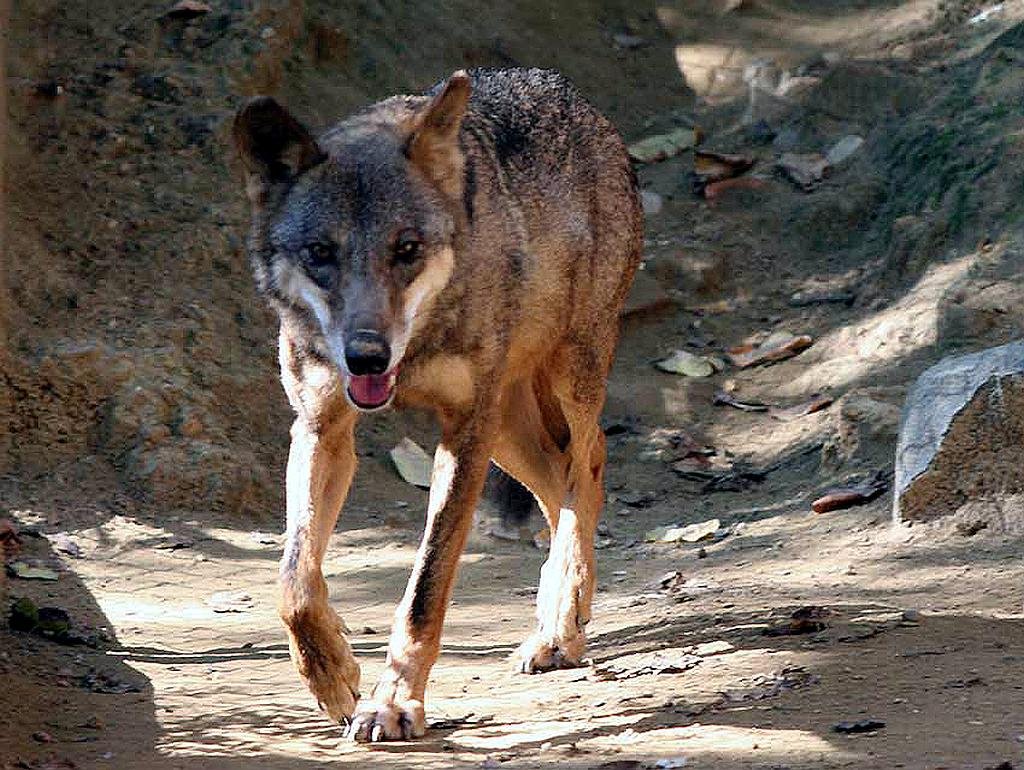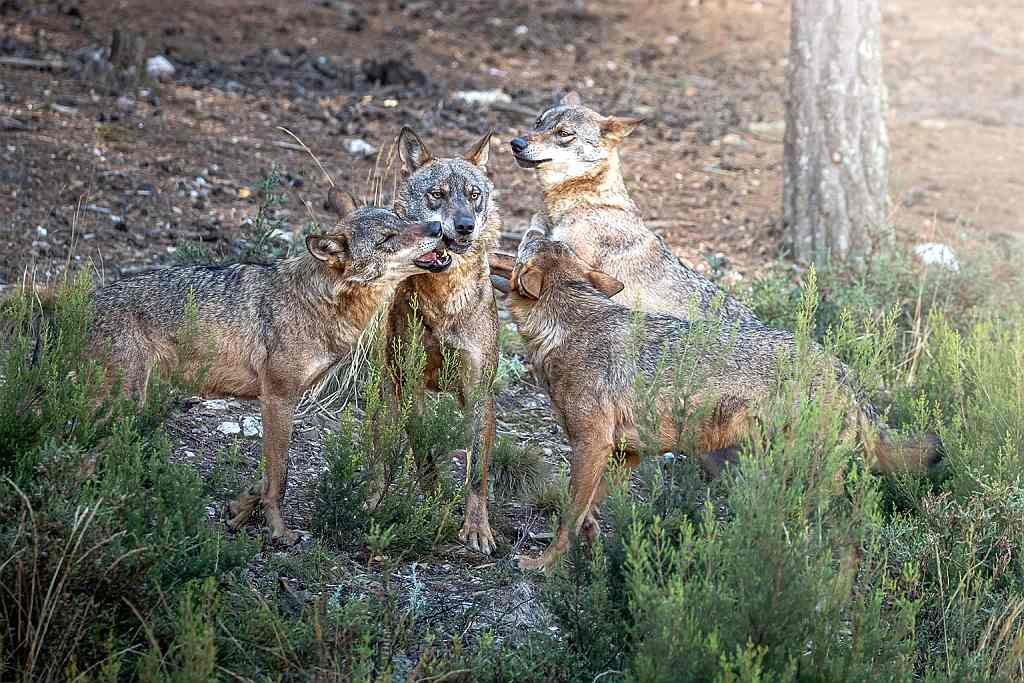The Iberian wolf, Canis lupus signatus, is a subspecies of the grey wolf endemic to the Iberian Peninsula. It is distinguished by its medium size and dark markings on its tail, forelegs, and shoulders. Once widespread, the Iberian wolf has had a tumultuous history, nearly driven to extinction in the 1970s due to hunting and habitat destruction. However, thanks to protective measures taken by various organizations, the population has stabilized, making the Iberian wolf a symbol of biodiversity in Spain.
Are Wolves Still in Sierra Morena?
One of the most frequently asked questions is whether wolves still live in the Sierra Morena. There have been mixed reports from residents and wildlife enthusiasts alike. Some claim wolves are still present in areas like Andújar, while others argue that the species became extinct in the region by the 1990s.
The last verified sighting of wolves in Sierra Morena dates back to 2012, and since then, there have been no confirmed sightings despite extensive camera monitoring in the area. Genetic studies on wolf droppings also found evidence of inbreeding, suggesting that any surviving population was not viable. Some people recall reports of hybrid wolves from the early 2000s, but most experts agree that stable wolf populations no longer exist in the region.
In 2023 the Junta de Andalucia finally declared the wolf extinct in Andalucia. (Read here in Spanish.)
Reintroduction Efforts and Challenges
Despite rumors of occasional sightings, the general consensus is that any re-establishment of wolves in Sierra Morena would require a deliberate reintroduction effort. While there have been discussions about such efforts, resistance from hunting and livestock industries has proven to be a major hurdle. Genetic diversity remains a crucial concern, as any successful reintroduction would need wolves from other regions to bolster the population’s genetic health.
The idea of reintroducing wolves in other parts of Spain and Europe has faced similar difficulties. Wolves provide important ecological benefits, such as controlling populations of wild boar and other herbivores, but they also raise concerns among farmers and hunters. Finding the right balance between these benefits and the potential damage to livestock remains one of the biggest challenges.
The Ecological Role of Wolves
Wolves play a vital role in maintaining healthy ecosystems. As apex predators, they help control populations of herbivores, which can prevent overgrazing and promote biodiversity. A well-known example of this occurred in Yellowstone National Park in the United States, where the reintroduction of wolves restored balance to an ecosystem that had been suffering in their absence. Similarly, in Spain, overpopulated species like wild boar have caused issues in areas where wolves no longer exist, underscoring the importance of their role in the ecosystem.
However, those who oppose wolf reintroduction often cite the damage wolves cause to livestock. Although compensation programs exist, many farmers feel these are inadequate or inconsistently applied. This tension between the need for ecological balance and protecting rural livelihoods is a central issue in the debate over wolves.
Genetic Studies: Is the Iberian Wolf Unique?
The Iberian wolf, often referred to by its scientific name Canis lupus signatus, is not just any grey wolf but a subspecies unique to the Iberian Peninsula. Its distinct characteristics include its smaller size and dark markings, setting it apart from other wolves across Europe. Although some genetic studies have shown similarities between the Iberian wolf and Canis lupus lupus, the Iberian wolf’s isolation from other populations over time has contributed to its unique traits.
Read our full article about the Iberian Wolf here.
Despite its genetic distinction, the Iberian wolf has suffered from a lack of genetic diversity, especially in regions like Sierra Morena. By the time the population began to dwindle in the south, the remaining wolves were already showing signs of inbreeding. This lack of genetic variation poses a significant challenge for any future reintroduction efforts.
The Future of Wolves in Southern Spain

The question of whether wolves will return to southern Spain remains unanswered. While some hold out hope for natural recolonization from central populations, significant obstacles remain. Reintroduction efforts face strong opposition from local industries, and genetic diversity remains a major challenge. For wolves to thrive in Andalusia, stable wolf packs would need to establish themselves in neighboring regions like Castilla-La Mancha and Extremadura and this process could take decades.
For now, it seems unlikely that southern Spain will see a stable wolf population in the near future, although isolated sightings may still occur. As public awareness of conservation issues grows, attitudes may shift, but achieving a lasting solution will require significant effort from all parties involved.
The wildlife association RASTREA based in the Sierra Morena are platforming for a re introduction plan in the area though. (More here in Spanish.)
The ongoing discussion about wolves in southern Spain reflects the deep connection people have with these iconic animals. While the lobo ibérico once thrived in regions like Sierra Morena, they have since disappeared, leaving behind a heated debate over their potential return. The challenges of genetic diversity, resistance from rural industries, and the need for ecological balance make the future of wolves in Andalusia uncertain. Still, the legacy of these animals remains, as they continue to symbolize the wild beauty of Spain’s natural landscape.
Ronda Today
Everything you need to know before you visit Ronda “The city of dreams” in Andalucia. https://www.rondatoday.com/
Visit Cádiz
Planning on visiting Cádiz? Tourist information. Monuments. Hotels. Activities. City guides: https://visitingcadiz.com/
The Caminito del Rey
Find tickets for the Caminito del Rey: https://www.caminodelrey.es/
Wildside Holidays – Spain
Take a trip on the Wildside! Discover the wildlife and nature of Spain, its Natural and National Parks and find the top wildlife, activity and walking holiday companies.
Iberia Nature Forum
Struggling with identifying those bugs and beasties? Why not check out the Iberia nature Forum! https://iberianatureforum.com/
I’ve been living in this lovely area of Western Andalucia for the last 20 years or so and dedicate most of my time to the running of English language tourist information websites for the towns of Cádiz, Ronda, Grazalema, the famous or infamous Caminito del Rey, and also Wildside Holidays, which promotes sustainable and eco-friendly businesses running wildlife and walking holidays in Spain. My articles contain affiliate links that will help you reserve a hotel, bus, train or activity in the area. You don’t pay more, but by using them you do support this website. Thankyou!
